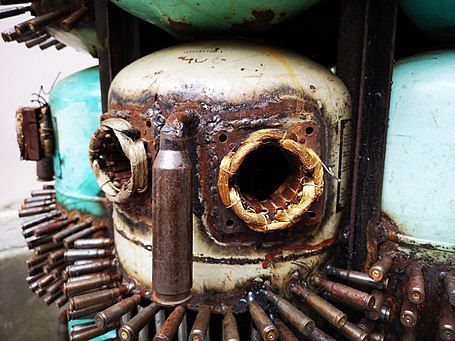African continent spans 54 countries, each with its own unique culture, traditions and social structures. So the concept of contemporary African art has always been very difficult to define. But there are some key factors we can look at to understand what has made the African art scene what it is today.
Négritude and Post-Colonialism
Négritude was primarily a literary movement led by the writers Aimé Césaire, Léon Damas and Léopold Sédar Senghor. It played a huge part in art history. The movement aimed to critique colonialism and cultivate an appreciation for black and African culture.
One of the most significant visual artists of the African art movement is Guyanese painter Aubrey Williams. The artist used abstraction as a means to avoid being stereotyped into a Westernized, narrow view of African art.
Decolonization was a lengthy process, spanning a 50 year period, until South Africa’s eventual independence from a white-ruled government in 1994. African artists began to experiment with new art styles and explore new themes that arose in this period of fundamental change. One key found-object artist is anti-war activist and sculptor Gonçalo Mabunda from Mozambique. Mabunda creates his works from weapon parts collected by the Christian Council of Mozambique after the 20 year civil war.
Increasing Recognition of Contemporary African Art in Western Circles
In the late 20th century, several African art exhibitions in the West were instrumental in popularizing African art. In 1989, the Center Pompidou in Paris debuted the exhibition “Magiciens de la terre”. The recent boom of African art in the market has lead to huge investment on the continent. An increasing number of artistic venues are being established, and many more art fairs and exhibitions are being held.
Zeitz Museum of Contemporary Art Africa in Cape Town, South Africa, has become the heart of African contemporary art.
he Museum of African Contemporary Art Al Maaden in Marrakech, Morocco is another hub of contemporary African art. The art museum is home to an incredible permanent African art collection.
Many African countries’ national museums are also home to expansive collections of African art.
The Rise
In the spirit of Negritude and post-colonialism, African artists explore the complexity of African identity
Leslie Amine is heavily influenced by African diaspora. She explores the themes through her work of race, being biracial, and split cultural identity through her paintings.
Yannis Davy Guibinga uses his art to document a new generation of Africans who unapologetically celebrate their cultural heritage in spite of Western cultural imperialism.
contemporary African art remains only a tiny part of the art market, still in recovery from the cultural and economic damage caused by centuries of colonialism.

























